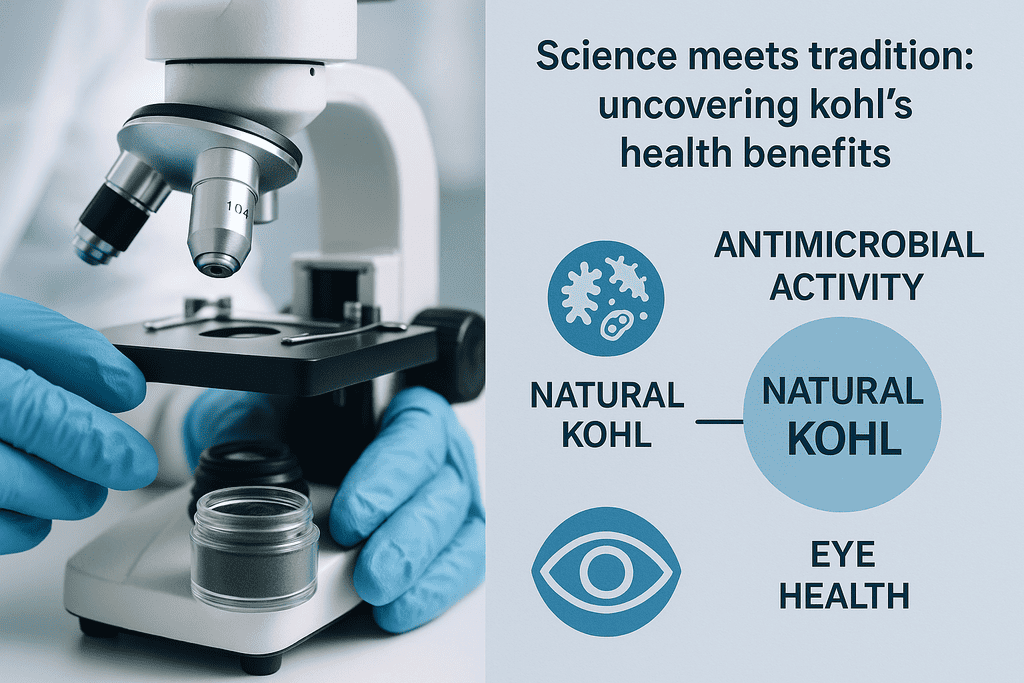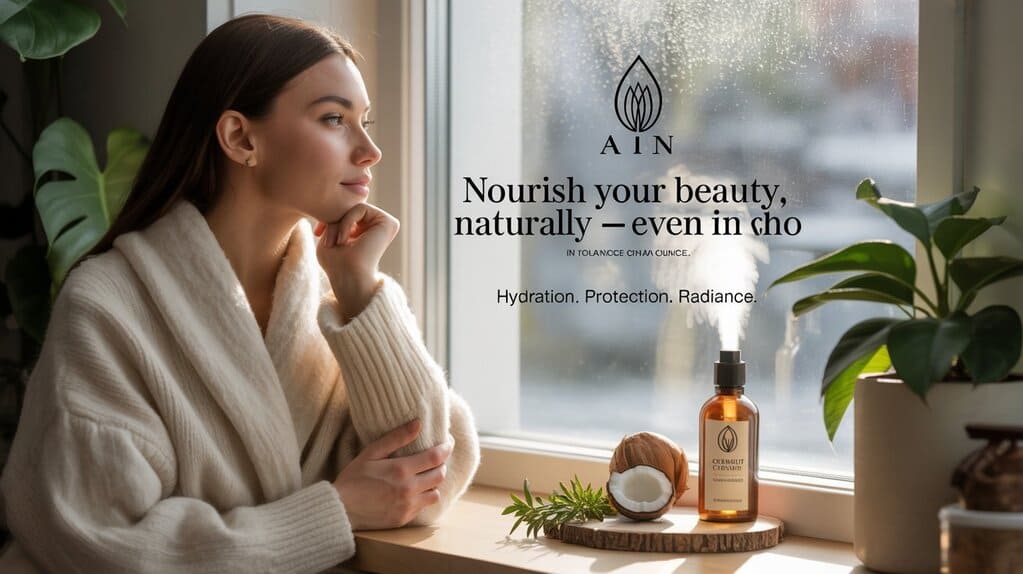
Introduction
Kohl (Arabic: كحل, also known as ithmid, surma, kajal) is an ancient eye cosmetic that has been used for millennia across North Africa, the Middle East, South Asia, and parts of Europe. Beyond its role as a makeup product, kohl occupies an important place in cultural identity, traditional eye care, and ritual. Modern science has both validated and questioned some traditional claims about kohl: research shows antimicrobial and anti-inflammatory properties for certain formulations, while regulatory bodies have warned about heavy-metal contamination (notably lead) in some traditional preparations. This article provides an SEO-friendly, evidence-based overview of kohl’s history, types, health benefits and risks, safe use recommendations, and key scientific references for further reading. Wikipédia+1
The Historical and Cultural Background
Kohl’s use dates back to ancient civilizations such as Egypt, Mesopotamia, and the Levant where it served cosmetic, medicinal, and symbolic functions. Artifacts and chemical analyses show that early kohls were manufactured from stibnite (antimony sulfide) and other mineral pigments. The practice continued into Islamic societies, where kohl (particularly ithmid, thought to be antimony-based) is mentioned in classical medical and religious texts and remained part of daily grooming and protective eye care. Archaeological and isotopic studies confirm the long geographic spread and material diversity of kohl recipes. Wikipédia+1

Types of Kohl : Natural vs. Modern Formulations
Table 1 — Common Kohl Types: composition, traditional claims, modern concerns
| Type | Typical composition | Traditional claims | Modern safety notes |
|---|---|---|---|
| Ithmid (antimony-based) | Antimony sulfide (stibnite, processed antimony) | Strengthens eyes, promotes eyelash growth, antimicrobial | Some studies show antimicrobial effects; purity matters. PubMed Central+1 |
| Lead-based kohl (galena) | Lead sulfide (galena) | Intense black color, long tradition in many regions | Linked to lead exposure and poisoning; public-health warnings exist. U.S. Food and Drug Administration+1 |
| Charcoal/coal or soot-based | Carbon (soot), plant oils | Cosmetic darkening (safe if pure) | Lower heavy-metal risk but variable microbial contamination possible. Wikipédia |
| Commercial “kohl” eyeliners | Synthetic pigments, waxes, cosmetic additives | Cosmetic, FDA-regulated formulations (in many countries) | Generally safer when produced under regulated standards. Allure |
Keywords (SEO): kohl, ithmid, surma, kajal, natural eyeliner, eye health, lead in cosmetics, antimicrobial kohl, traditional cosmetics.

What Modern Science Shows
Antimicrobial and Anti-inflammatory Properties
Several laboratory and small clinical studies report that certain natural kohl preparations (especially antimony-rich ithmid) may exhibit antibacterial and anti-inflammatory effects in vitro and in limited in vivo settings. For example, karbassi et al. (2022) and related reviews summarize antimicrobial activity in some traditional formulations, suggesting potential benefits in reducing conjunctival bacterial loads. Experimental work with ithmid combined with modern carriers (e.g., zinc-oxide nanoparticles) has also been published, indicating possible therapeutic avenues. PubMed Central+1
Heavy-Metal Contamination and Toxicity
Public-health authorities and peer-reviewed reports have repeatedly warned that some traditional kohl products contain dangerous levels of lead (galena) or other heavy metals. The U.S. FDA, Pure Earth, and several scientific investigations have documented that imported or homemade kohl can be a source of lead exposure, particularly harmful to infants and pregnant women — therefore many jurisdictions discourage or ban sale of unregulated kohl. If a kohl contains lead, repeated ocular application can raise blood lead levels and cause systemic toxicity. U.S. Food and Drug Administration+2U.S. Food and Drug Administration+2
Evidence Quality and Geographic Variation
It is important to note that study quality varies, and not all kohl products are identical. Research spans in vitro assays, small clinical trials, ethnopharmacology studies, and toxicology case reports. Results indicate heterogeneous outcomes depending on raw materials, manufacturing, and contamination. This heterogeneity explains why some papers emphasize safety and benefits while others document hazards. PubMed Central+1

Health Benefits — What Is Likely (and What Is Not)
Potential (documented) benefits:
- Local antimicrobial activity in some formulations (possible reduction in bacterial conjunctivitis risk in limited studies). PubMed Central
- Physical barrier: in dry, dusty climates, kohl historically served to reduce glare and act as a particulate barrier to the eye. Wikipédia
Risks and harms to be aware of:
- Lead poisoning from lead-containing kohl (documented cases and regulatory warnings). U.S. Food and Drug Administration+1
- Microbial contamination of unsterile preparations, causing local infection. ResearchGate
Practical Safety Recommendations (Evidence-based)
- Buy from reputable sources. Choose commercially produced eyeliners that meet local cosmetic regulations and list ingredients. Avoid unlabelled or homemade powders of unknown origin. Allure+1
- Check for heavy-metal testing. If you use a traditional product, prefer suppliers who provide third-party testing for lead and other heavy metals. Pure Earth
- Avoid applying to infants. Do not use traditional kohl on babies or very young children due to increased susceptibility to lead toxicity. U.S. Food and Drug Administration
- Maintain hygienic applicators. Replace or sterilize applicators frequently to reduce infection risk. PubMed
- Consult a healthcare provider. If you suspect exposure or observe eye irritation, consult an ophthalmologist or public-health clinic for testing and guidance. U.S. Food and Drug Administration
Key Points (Quick Summary)
- Kohl is both a cultural tradition and a cosmetic with a complex safety profile. Wikipédia
- Some natural formulations (including ithmid) show antimicrobial properties in research studies. PubMed Central+1
- Lead contamination is the principal health risk in certain traditional kohls; regulatory bodies have issued warnings. U.S. Food and Drug Administration+1
- Safe practice means choosing regulated products, ensuring ingredient transparency, and avoiding use on infants. Pure Earth+1

Figure — Simple Decision Flow (textual)
- Want to use kohl? → Choose between commercial cosmetic eyeliner (regulated) or traditional kohl (investigate).
- If traditional: ask for third-party heavy-metal test → If test is clean → use with hygienic applicator; if not, discard.
- If in doubt or for infants/pregnant women → avoid traditional kohl and consult a physician.
Notable Researchers and Publications (examples)
- A. Al-Kaff — epidemiological study of kohl use (Riyadh population survey; PubMed 1993). PubMed
- E. Karbassi et al. (2022) — review and experimental findings on antibacterial effects of some kohl preparations. PubMed Central
- S.O. Hasson (2024) — in vivo/in vitro work on ithmid paired with zinc-oxide carriers (PMC article). PubMed Central
- Regulatory sources: U.S. Food and Drug Administration — warnings about lead in kohl; public health advisories. U.S. Food and Drug Administration+1
Conclusion
Kohl remains an enduring symbol of beauty and cultural continuity across many societies. Scientific work has begun to explain why some traditional formulations might have beneficial antimicrobial effects, while also confirming a real and avoidable toxicological risk when raw materials are contaminated with heavy metals like lead. The safest approach is to honor tradition while following modern safety standards: choose tested, reputable products; avoid applying untested powders to infants; and treat kohl as both a cultural practice and a substance that deserves the same safety scrutiny as other cosmetics. For those who wish to preserve the ritual of kohl, seeking ethically sourced, laboratory-tested ithmid or modern cosmetic equivalents provides a balanced path that respects heritage and protects health. PubMed Central+1
Selected References & Further Reading
- Kohl (cosmetics) — Wikipedia (overview and history). Wikipédia
- U.S. Food & Drug Administration — Kohl, Kajal, Al-Kahal, Surma, Tiro, Tozali, or Kwalli: Any Name, Beware Lead Poisoning. (FDA advisories & lead in cosmetics). U.S. Food and Drug Administration+1
- Karbassi E., et al. (2022). The Efficacy of Kohl (Surma) and Erythromycin in… — PMC/NCBI review of antimicrobial action. PubMed Central
- Hasson S.O., et al. (2024). In vivo and in vitro efficacy of the ithmid kohl/zinc-oxide nanoparticles… — PMC article on ithmid formulations. PubMed Central
- Al-Kaff A., et al. (1993). Kohl — the traditional eyeliner: Use and analysis. PubMed. PubMed
- Pure Earth (2024). Investigations into lead-contaminated kohl sold in the U.S. (testing and public-health recommendations). Pure Earth








